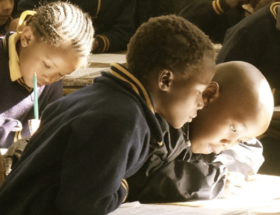What do a pro basketball star and a teacher have in common? It sounds like I’m attempting to be witty, but it’s no joke. Several weeks ago, Kelly Gallagher tweeted a link to an article in the New Yorker that begged this very question.
In the article, James Surowiecki writes about the transformation of athletic training over the last four decades. He explains how training efforts from forty years ago that would have seemed unattainable and obsessive are now the very tools athletes use to stay in the game. Athletes don’t just work harder, they use science and technology (along with expensive “private” coaches) to give them an edge when they perform. This shift isn’t just about technique; it mirrors a change in attitude, the idea that success doesn’t rely on pure talent.
Many times in education, we fall into the trap of thinking a classroom teacher either has the “gift” or doesn’t. The same was once true in the world of sports: “The prevailing philosophy was ‘What you are is what you are’.”
I think there’s a lesson there that teachers can take from athletes: “What you are is what you make yourself into.”
The education community at large certainly works to facilitate improvement for the classroom teacher. Volumes of practical help are available in professional books, journals, and articles. Districts and regional centers around the country provide quality professional development training for educators. Online webinars, teacher/educator blogs, Twitter, and a host of other Internet-based resources can be critical in a teacher’s ongoing professional development. (If you don’t follow “edu-peeps” on Twitter, do it! Donalyn Miller recently remarked that following educators on Twitter is PD in your PJs. She’s spot on!)
Surowiecki points out that high-performing athletes working to make themselves into elite competitors no longer have a single coach or mentor. Perfect example: Chris Hoy, a British cyclist who secured two gold medals in 2012, “is trailed by a team of scientists, nutritionists, and engineers.” At this point in the article, I’m asking, “Who are the critical members of the teacher’s continuous improvement entourage?”

A teacher’s salary doesn’t even come close to that of a professional athlete; we can let go of the idea that educators can afford a team of experts to improve performance. Key members of educators’ continuous improvement teams are already in-house. I believe the team of experts are the teachers, support staff, building administration—those already doing the important work on each campus. We must, however, look at a model that will ensure that teachers do not work alone at the task of continuously improving. How do we, in education, form teams that focus on improving the right things?
This is precisely where teachers and those who support them should “lean in.” Our efforts to improve must include a laser-sharp focus. Professional learning communities are the perfect venue for this single-minded approach to continual improvement.
ASCD published an article several years ago by Richard DuFour with the three key components of a professional learning community: commitment, collaboration, and corroboration. Teachers in professional learning communities meet in grade-level or across-grade-level groups. Richard DuFour posits [2] that PLCs start with a commitment to student learning. The emphasis moves from the teaching to the learning. No longer are we content with the fact that “we taught it.” We don’t rest until we identify exactly how we’ll know when students have “learned it.”
Professional learning communities are typified by collaboration. Teachers who dedicate themselves to improving performance to ensure student learning can no longer work in isolation. Once again, Richard DuFour: “The powerful collaboration that characterizes professional learning communities is a systematic process in which teachers work together to analyze and improve their classroom practice. Teachers work in teams, engaging in an ongoing cycle of questions that promote deep team learning. This process, in turn, leads to higher levels of student achievement.”
The success of a professional learning community is found in the evidence of student progress. If student learning is the goal of a PLC, and teachers collaborate by examining and improving specific instructional practices, then it follows that student growth will be measured. Weekly formative assessments are created based on learning objectives driven by standards. Once administered, assessments can help teachers pinpoint specific student needs and call on members of the PLC to discuss ways in which to target instruction for improvement.
As a part of a PLC, teachers no longer work in isolation to plan for instruction. They have the benefit of the thinking, strategies, and professional expertise of the team. Sound familiar? It should. We’re back to the idea of athletes (thank you, Kelly Gallagher) using the collective power of a team of experts to improve performance. Compelling metaphor. Powerful practice.
How have PLCs worked on your campus? What do you think about the power of PLCs?











